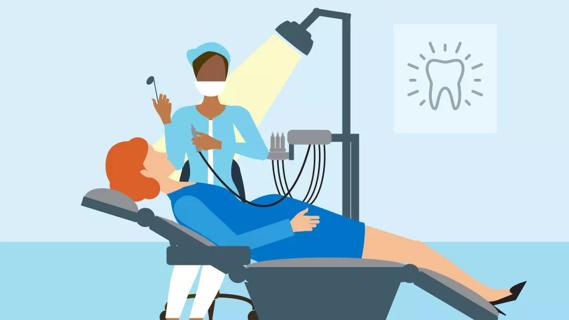Your body will labor when it’s ready, but some of these folklore methods might be worth a try

You’ve been carrying a baby in your belly for 39 weeks, and the moment you’ve been waiting for is just around the corner. Oh, the anticipation!
Advertisement
Cleveland Clinic is a non-profit academic medical center. Advertising on our site helps support our mission. We do not endorse non-Cleveland Clinic products or services. Policy
And the uncertainty. And the exhaustion. And, frankly, the discomfort.
All of it can make those last few weeks or days or hours crawl by at a snail’s pace.
If you find yourself scouring pregnancy blogs and internet message boards for anything you can do to help nudge your body into labor, you’re definitely not alone. While there’s no guaranteed way to do it, there are some natural techniques that many women swear by.
Some of them are merely old wives’ tales, while others have actually been studied by researchers. But if you’re planning to try any method to jump start your labor, certified nurse midwife Jessica Costa, MSN, APRN, CNM advises that you discuss it first with your midwife or physician.
Here, she weighs in on which commonly used methods are safe to try, and which are worthy of caution.
This is one of the simplest ways that women try to jump start their labor. No study has found it effective, but some have found that spending time upright during labor has the potential to shorten the process.
“Movement is not going to induce labor, but it can really help progress labor and get baby in a good position for birth,” Costa affirms.
The verdict: Do it – please! “I highly encourage women to stay active during their pregnancy and walk 30 minutes most days,” she says. “That helps with labor preparation, fetal positioning and endurance also.”
Advertisement
A few studies have found no difference in the timing of labor for women who have sex during the end of their pregnancy and those who don’t. But there’s a biological explanation that suggests it could be worth a try.
“Making love can help stimulate the body’s natural love hormone, oxytocin, and that’s what causes contractions,” Costa explains. “A woman’s orgasm can also help with contracting the uterus if the body is ready, and semen is a natural source of prostaglandins, which can soften the cervix.”
The verdict: Feel free to give it a try. If nothing else, it’s a good way to stay connected with your partner during this exciting and busy time.
Pineapple is loaded with an enzyme called bromelain that is sometimes used to help get the bowels moving. It hasn’t been well researched, but the thought is that, since the uterus sits right next to the intestines, it might also become irritated and start to contract.
The verdict: “If a woman is not in labor, it’s worth a shot,” Costa says. You’ll also get a nice dose of vitamin C, fiber and manganese.
Stimulating the nipples releases oxytocin, and there is actually some solid research behind this method.
“Sometimes a mom comes in with her water broken but she’s not in labor, or labor has started and is slowing down,” Costa explains. “I will have her try nipple stimulation before we start Petocin (a drug that induces labor).”
The verdict: It can be effective. But she recommends that women do it only under supervision of a physician or midwife. It’s best to monitor the baby and make sure the baby is tolerating the stimulation.
Made from the little-known castor bean, castor oil is a powerful laxative that stimulates the intestines. It may, in turn, irritate the uterus and cause contractions.
The verdict: It’s not for everyone, and it’s not without risks, so talk with your physician or midwife about whether it’s a good option for you.
“For some women it can work great, but for others it’s just going to cause a lot of diarrhea and a lot of trips to the bathroom,” Costa says. “Your body has to be ready for this to work, and your provider can help with the right timing. It can also cause dehydration, so staying hydrated is crucial if using this method.”
This procedure can be done during a visit with a physician or midwife once you’ve started dilating. They use a finger to separate the amniotic sac that surrounds the baby from the area around your cervix. This is thought to trigger the release of prostaglandins, which are hormones that soften the cervix and prepare the uterus to contract.
The verdict: Research is mixed on this one, and Costa says she counsels patients on an individual basis about this method.
Advertisement
“It isn’t without risks, like potentially breaking the bag of water, causing infection or irregular irritating contractions that don’t lead to labor,” she explains. “But for some women it can help lower their chances of needing a formal induction or shorten the length of pregnancy.” This is an option to discuss with your midwife or physician.
As in the fruit – not a candlelight dinner and a movie. Eating dates can help soften the cervix and promote spontaneous labor, Costa says. In one study, women who ate date fruit for four weeks prior to their due date were less likely to need a formal induction.
The verdict: Costa encourages all of her patients to eat six dates a day. Just make sure to buy the whole, pitted dates, rather than the ones that come diced up and covered in sugar.
This herbal tea rich in iron, calcium and vitamins won’t induce labor, but studies have shown that it’s safe and potentially beneficial during pregnancy.
“It’s a uterine tonic, so it won’t stimulate or shorten labor, but it can help spontaneous labor occur and make labor easier for women,” Costa says.
The verdict: She recommend women drink one to two cups a day starting at 32 weeks.
Perhaps the most important thing to do as you await the arrival of your new baby is the hardest to swallow – have patience.
Advertisement
“I tell people to enjoy the last days of the pregnancy as much as possible,” Costa says. “Sometimes you just need a tincture of time! I promise there will be an end.”
Advertisement
Learn more about our editorial process.
Advertisement

While it may be possible, it may not be safe

Spoiler alert: Science says just one!

The short answer from an Ob/Gyn

Use relaxation techniques and breathwork to help manage the discomforts of a medication-free birth

Talk with them about their new sibling early and often

Dental care is not only safe during pregnancy, but it’s also highly recommended

A healthy pregnancy diet includes good amounts of folic acid, DHA, calcium and more

If left untreated, you risk complications, early labor and passing the infection to your baby

Type 2 diabetes isn’t inevitable with these dietary changes

Applying a hot or cold compress can help with pain